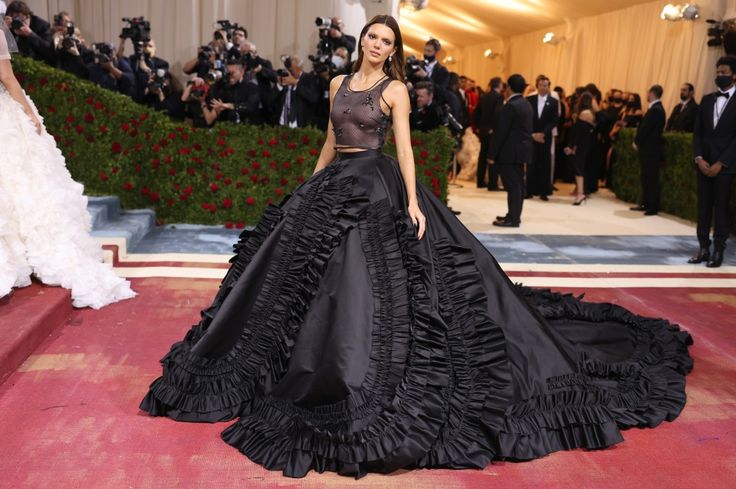Introduction:
Brief history of the Met Gala
The Met Gala traces its origins back to 1948 when publicist Eleanor Lambert organised the “Party of the Year” to raise funds for the Costume Institute. Initially, it was a relatively modest affair, attended primarily by New York’s elite socialites and fashion insiders.
Purpose of the Met Gala
Beyond its fundraising aspect, the gala serves as a celebration of art, fashion, and creativity. Each year, it revolves around a specific theme, providing designers and attendees with an opportunity to interpret and showcase their sartorial prowess.
Evolution of the Met Gala:
Origins and early years
In its early years, the Met Gala was a relatively low-key affair, with attendees adhering to a formal dress code. However, it gradually gained prominence, attracting a broader audience and expanding its influence within the fashion industry.
Transition into a celebrity-studded event
With the rise of celebrity culture in the late 20th century, the Met Gala transformed into a star-studded extravaganza. A-list celebrities and cultural icons began gracing the red carpet, turning the event into a spectacle watched by millions worldwide.
Theme evolution over the years
One of the defining features of the Met Gala is its annual theme, which sets the tone for the event and influences attendees’ fashion choices. Themes range from historical periods and artistic movements to social issues and cultural phenomena, encouraging creativity and innovation.
Fashion and Iconography at the Met Gala:
Iconic fashion moments
The Met Gala has witnessed countless iconic fashion moments that have left an indelible mark on popular culture. From Rihanna’s show-stopping yellow gown to Lady Gaga’s theatrical entrances, the event serves as a runway for avant-garde designs and boundary-pushing creativity.
Influence of celebrities and designers
Celebrities and designers play a pivotal role in shaping the narrative of the Met Gala, with their outfits and statements often garnering widespread attention and acclaim. Their collaborations with renowned fashion houses and stylists further elevate the gala’s status as a pinnacle of style and glamour.
Impact on popular culture and trends
The Met Gala’s influence extends far beyond the confines of the fashion industry, shaping trends and sparking conversations across various media platforms. Its red carpet serves as a barometer of current fashion trends, setting the stage for future sartorial movements.
Controversies Surrounding the Met Gala:

Cultural appropriation debates
Despite its celebration of diversity and creativity, the Met Gala has faced criticism for cultural appropriation, with some outfits being deemed insensitive or offensive. These controversies highlight the importance of cultural sensitivity and representation in the fashion industry.
Criticisms of exclusivity
The Met Gala’s exclusive guest list and hefty ticket prices have been the subject of scrutiny, with critics arguing that it perpetuates elitism and excludes marginalised voices. Calls for greater inclusivity and accessibility have prompted discussions about the gala’s role in promoting diversity and equity.
Environmental concerns
In recent years, the Met Gala has come under fire for its environmental impact, particularly regarding the extravagant outfits and lavish decorations. Critics have called for more sustainable practices, urging organisers and attendees to prioritise eco-friendly fashion choices and reduce waste.
The Met Gala as a Platform for Social Commentary:
Political statements and activism
Amidst the glitz and glamour, the Met Gala has served as a platform for political statements and activism, with attendees using their outfits to raise awareness about pressing social issues. From climate change to gender equality, fashion becomes a powerful tool for advocacy and change.
Representation and inclusivity
As conversations about diversity and representation gain momentum, the Met Gala has made strides towards greater inclusivity, welcoming a more diverse array of attendees and celebrating underrepresented voices. However, there is still work to be done to ensure that the event reflects the richness and diversity of global cultures.
Philanthropic efforts
Beyond its extravagant displays of fashion, the Met Gala remains committed to its philanthropic mission, raising millions of dollars for the Costume Institute’s exhibitions and programs. These funds support educational initiatives, research projects, and conservation efforts, ensuring that the museum remains a beacon of artistic excellence.
The Future of the Met Gala:

Adapting to changing times
As the cultural landscape continues to evolve, the Met Gala must adapt to stay relevant and engaging. This may involve embracing new technologies, expanding its digital presence, and exploring innovative ways to engage with audiences worldwide.
Embracing technology and digital media
In an increasingly digital world, the Met Gala has the opportunity to leverage technology and social media to reach a broader audience and enhance the gala experience. Live Streams, virtual reality tours, and interactive exhibits can provide unprecedented access to the event and its exhibitions.
Forecasting trends in fashion and culture
As a trendsetter in the fashion industry, the Met Gala has the power to shape cultural narratives and influence consumer behaviour. By staying attuned to emerging trends and societal shifts, the gala can continue to serve as a barometer of contemporary taste and style.
Conclusion:
The Met Gala stands as a testament to the transformative power of fashion and art, transcending its status as a mere social event to become a cultural phenomenon. Through its celebration of creativity, diversity, and philanthropy, the gala inspires generations of designers, artists, and fashion enthusiasts to push the boundaries of self-expression and imagination.


